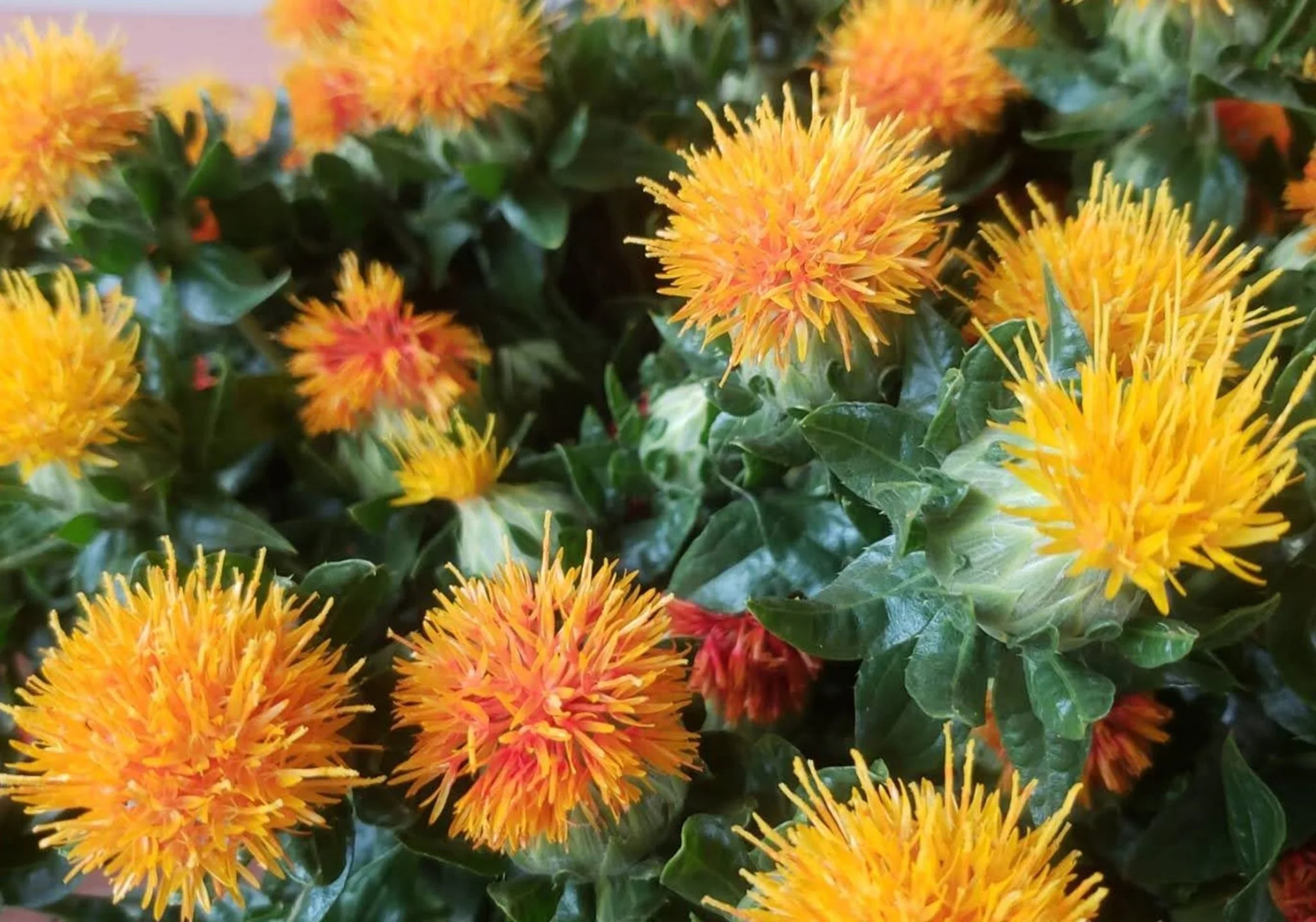Microseason: Safflowers Flourish
SUMMER
APPROACHING ABUNDANCE
SAFFLOWERS FLOURISH
26 - 30 May
Vibrant orange-red benibana flourish across Japan this time of year. Benibana is deeply rooted in Japan’s traditional dyeing culture, creating a spectrum of reds. The valuable benibana dye was essential in courtly garments, and use as aromatic oil in medicines and cuisine. Without benibana, kimono, hair accessories, and lip coloring would lack their distinctive hues.
Introduced from China, by the way of the Korean Peninsula, safflower arrived to Japanese shores approximately 1300 years ago. References in classical Japanese texts indicate that by the 600s, benibana was already used as a dye and medicinal plant. From the Heian through the Edo period, cultivation spread mainly along the Sea of Japan. During the 1700s, farming techniques were refined, and benibana became an economically-significant material. Particularly in regions such as Yamagata, Yamaguchi, and Tottori, cultivation thrived, where the climate and soil conditions were favorable.
Farmers meticulously tended to the plants, timing sowing and harvesting with the seasonal calendar. By late June, it's season harvest season. Often a communal affair, families and neighbors work in unison to gather the petals. The blooming flowers had to be carefully harvested at peak coloration, requiring skilled hands to maximize dye content and preserve quality.
Despite its delicate and vibrant appearance, the benibana is strikingly thorny. Covered with sharp spines, making harvesting a careful and often painful task. Farmers wear protective clothing and gloves specifically designed to shield their hands and arms from the thorns. This physical difficulty became a familiar part of local life, with proverbs and folk sayings describing the labor of benibana picking as something one undertook with resolve. The contrast between the flower’s radiant beauty and the pain required to gather it only deepened its symbolic resonance in Japanese culture. Red dye. Red blood.
The benibana industry reached its peak during the Edo period (1603–1868), when the demand for vibrant dyes surged alongside the growth of textile arts and the merchant economy. However, with the advent of synthetic dyes during the Meiji period thereafter, traditional benibana cultivation gradually declined. Despite this, the heritage of benibana remains alive through the efforts of local communities, cultural preservation groups, and agricultural research institutions. Yamagata is particularly known for continuing its benibana traditions. Celebrating Safflower Festival, educating new generations on the plant’s historical importance, and cultivating in small quantities for traditional dyers and upcoming product makers respectful of natural dyes.
Photo credit: Visit Yamagata

